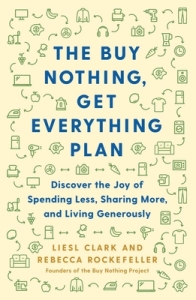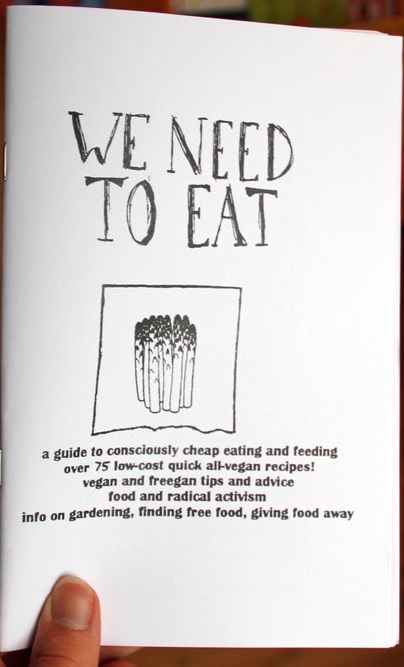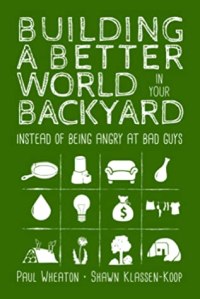Title: The Buy Nothing, Get Everything Plan
Author: Liesl Clark and Rebecca Rockefeller
Genre: Sustainability
Trigger Warnings: General ecological disaster angst
Note: Trigger warnings in DNF books only cover the part I read. There may be triggers further in the book that I did not encounter.
Read To: 6%
Back Cover:
In 2013, when friends Liesl Clark and Rebecca Rockefeller launched the first Facebook Buy Nothing Project group in their small town off the coast of Seattle, they never expected it to become a viral sensation. Today there are thousands of Buy Nothing groups all over the world, boasting more than a million members, and 5,000 highly active volunteers.
In their island community, Clark and Rockefeller discovered that the beaches of Puget Sound were spoiled by a daily influx of plastic items and trash washing on shore. From pens and toothbrushes to toys and straws, they wondered, where did it all come from? Of course, it comes from us–our homes, our backyards, our cars, and workplaces. And so, a rallying cry against excess stuff was born.
Inspired by the ancient practice of gift economies, where neighbors share and pool resources, The Buy Nothing, Get Everything Plan introduces an environmentally conscious 7-step guide that teaches us how to buy less, give more, and live generously. At once an actionable plan and a thought-provoking exploration of our addiction to stuff, this powerful program will help you declutter your home without filling landfills, shop more thoughtfully and discerningly, and let go of the need to buy new things. Filled with helpful lists and practical suggestions including 50 items you never need to buy (Ziploc bags and paper towels) and 50 things to make instead (gift cards and salad dressing), The Buy Nothing, Get Everything Plan encourages you to rethink why you shop and embrace a space-saving, money-saving, and earth-saving mindset of buying less and sharing more.
Review:
I’ll admit, I was a little skeptical about this book. I really really like the idea, but it seemed like something that should have been an article and not a full book. But I didn’t even get into the content before calling it quits – although from the way the beginning is written, I don’t think it’s going to be that groundbreaking.
It started with the authors talking about how they realized the extent of plastic pollution, and then going into facts and figures on plastic pollution, microplastics, greenhouse gases, and all sorts of other things that are going to destroy our environment. That seemed kind of unnecessary to me – if you’re picking up a book like this, you probably already know the problem and want to consume less.
And then they fell into capitalism’s most common problem – blaming the individual for systemic problems. Sixty percent of greenhouse gases, they say, are caused by consumers indirectly though the manufacturing process. This is not the fault of the manufacturers not switching to more eco-friendly methods, this is the fault of consumers for buying the goods.
Which I guess might be a slightly better argument if everyone in the world was independently wealthy and could make a conscious choice to only support eco-friendly options and live the wealthy minimalist life and etc., but most people’s reality is a bit different from that. Putting the blame on consumers and not where it belongs – the capitalist owners of the production process choosing to use destructive methods – doesn’t do anything but give ordinary people guilt for needing to purchase things to survive.
I think I’m going to be able to figure out how to give to my neighbors and purchase less without Rebecca and Lisel’s 7-step program. I’m very active on my local Freecycle group, and I’m already in the process of cutting down the things I have to purchase (I currently make all my own hair and skin products and my own toothpaste). If I decide I need what’s in this book, I bet I can find a summary online. But what I really don’t need is more unhelpful, counterproductive, unhealthy guilt about what I have to purchase to survive.



 Title: Building a Better World in Your Backyard – Instead of Being Angry at Bad Guys
Title: Building a Better World in Your Backyard – Instead of Being Angry at Bad Guys